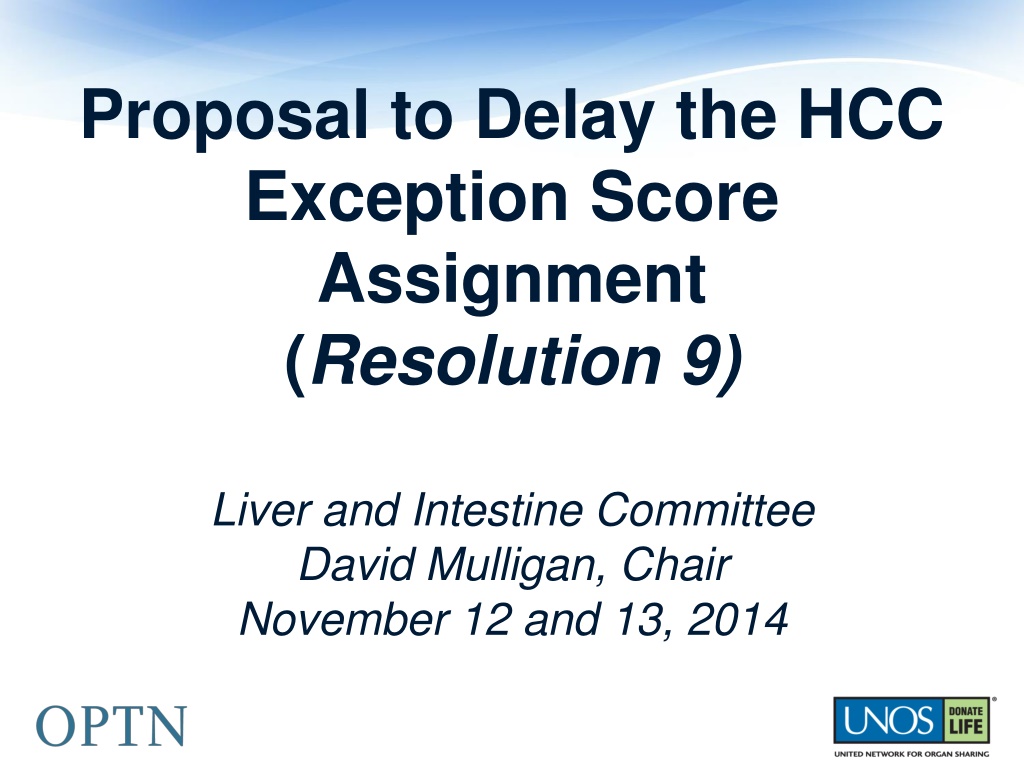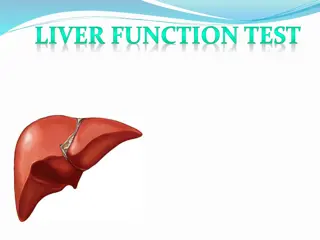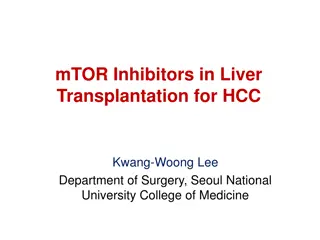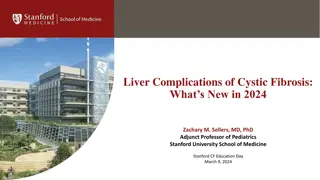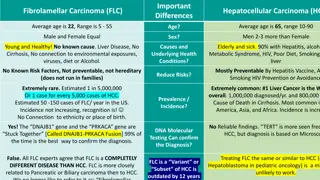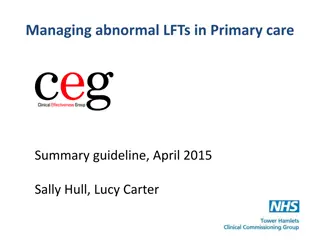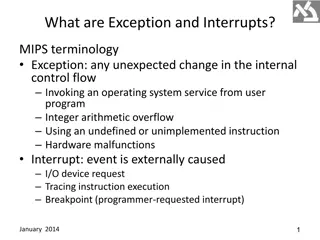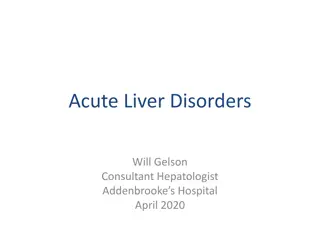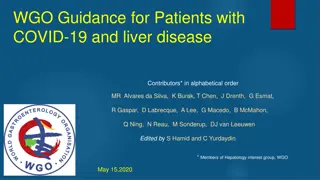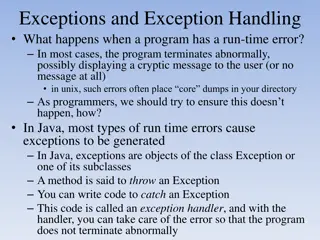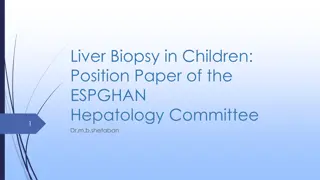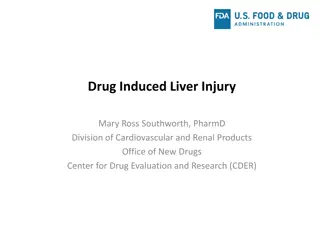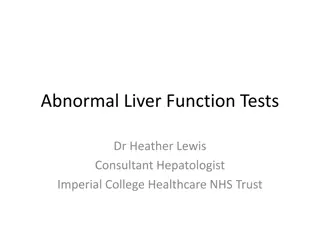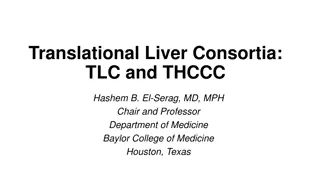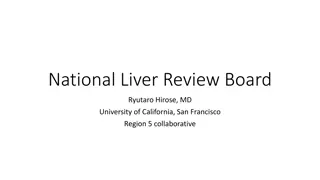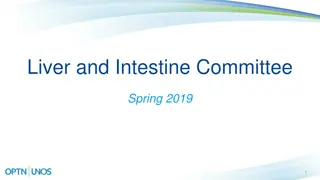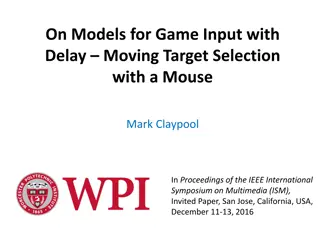Proposal to Delay HCC Exception Score Assignment in Liver and Intestine Committee
The proposal aims to postpone the assignment of HCC exception scores to achieve balance in dropout and transplant rates between HCC and non-HCC liver transplant candidates. By adjusting the score calculation schedule and considering supporting evidence, the goal is to promote equalization in the transplant process.
Download Presentation

Please find below an Image/Link to download the presentation.
The content on the website is provided AS IS for your information and personal use only. It may not be sold, licensed, or shared on other websites without obtaining consent from the author. Download presentation by click this link. If you encounter any issues during the download, it is possible that the publisher has removed the file from their server.
E N D
Presentation Transcript
Proposal to Delay the HCC Exception Score Assignment (Resolution 9) Liver and Intestine Committee David Mulligan, Chair November 12 and 13, 2014
The Final Rule: 42 CFR Part 121 October 20, 1999 121.8 of the Final Rule states that allocation policy should be based on objective and measurable medical criteria, for patients or categories of patients who are medically suitable candidates for transplantation to receive transplants Waiting time should be de-emphasized Patients should be rank ordered according to severity of disease and predicted mortality on the liver list
The Problem Candidates with HCC exceptions receive high priority on the waiting list Scores may increase automatically every three months Most patients treated (90%), many with stable tumors HCC: Significantly lower dropout rates than non-HCC
Goal of the Proposal To promote equalization of dropout and transplant rates between HCC and non-HCC liver transplant candidates
How the Proposal will Achieve its Goals Currently, as long as the candidate meets criteria, the initial score assignment is 22, followed by increases every 3 months Current Schedule 22 Proposed Schedule Calculated MELD Score Calculated MELD Score Initial Score First Extension (3 months) 25 Second Extension (6 months) 28 28 Remainder of schedule the same (29, 31, 33, etc.)
Delay HCC Supporting Evidence LSAM modeling: delay led to similar transplant rates between HCC and non-HCC At least in regions with lower waiting times Study by Halazun, et al: Recipients with HCC exceptions have worse outcomes in regions with shorter waiting times Biologic test not met due to rapid transplantation
Transplant Rates by HCC Status LSAM Modeling Results 140 120 Rate per 100 Person Years 100 80 60 40 20 0 Current Policy 108.7 30.11 3 Month Delay 64.99 32.5 6 Month Delay 44.22 33.91 9 Month Delay 33.6 34.81 HCC Non-HCC
Delay HCC Supporting Evidence 25 HCC Non-HCC (MELD < 21) Non-HCC (all) N=20,923 N=5002 N=14,839 20 % Dropout 15 10 5 0 0 100 200 300 Days after Listing/Initial Application Overall Dropout Rates for HCC and Non-HCC Candidates: Listed 4/14/04-12/31/07
% Dropout within 12 Months: HCC and Non-HCC Candidates by Region Candidates Added 7/1/08 6/30/11 25 23.2 21.7 20 17.7 % Dropout 15 HCC (Standard) 13.9 12 10 Non-HCC 4.8 5 0 1 2 3 4 5 6 7 8 9 10 11 US Region Region
Public Comment Public Comment: 31 responses were received. Of these, 14 (41.16%) supported the proposal, 9 (29.03%) opposed the proposal, and 8 (25.81%) had no opinion. Of the 23 who responded with an opinion, 14 (60.87%) supported the proposal and 9 (39.13%) opposed the proposal. Regional Responses: Opposed by 2, 3, 11
Committee Response HCC Subcommittee Recommendation: Forward to the Board without substantial post public comment changes. Committee voted in support: 14 in favor: 0 opposed: 1 abstentions
Overall Project Impact Product Policy Target Population Impact: Liver Transplant Candidates Total IT Implementation Hours 600/10,680 600 0 1000 2000 3000 4000 5000 Total Overall Implementation Hours 805/17,885 805 0 1000 2000 3000 4000 5000 6000
RESOLUTION 9, Page 18 RESOLVED, that Policies 9.3.G are modified as set forth below, effective pending programming implementation and notice to OPTN membership. Candidates with Hepatocellular Carcinoma (HCC) Upon submission of the required information to the OPTN Contractor, candidates with Hepatocellular Carcinoma (HCC) that have stage T2 lesions and meet the criteria according to Policies 9.3.G.i through vi below will be listed at their calculated MELD or PELD score 9.3.G.vi Extensions of HCC Exceptions In order for a candidate to maintain an HCC approved exception, the transplant program must submit an updated MELD/PELD exception application every three months. The candidate will receive the additional priority until transplanted or is found unsuitable for transplantation based on the HCC progression. Upon submission of the first extension, the candidate will be listed at the calculated MELD/PELD score. Upon submission of the second extension, the candidate will be assigned a MELD/PELD score equivalent to a 35 percent risk of 3-month mortality (MELD 28/PELD 41). For each subsequent extension, The candidate will receive additional MELD or PELD points equivalent to a 10 percentage point increase in the candidate s mortality risk every three months.
Thank you for your consideration. Questions? David Mulligan, MD Committee Chair David.Mulligan@yale.edu Ashley Archer-Hayes, MAS Committee Liaison Ashley.Archer-Hayes@unos.org
